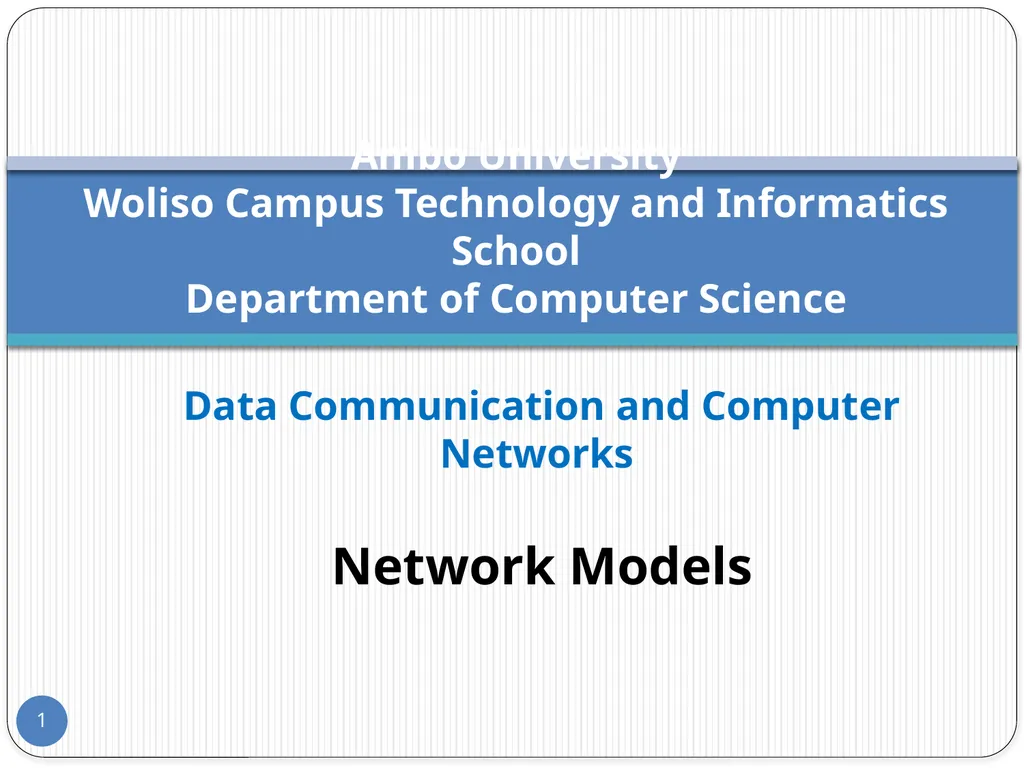
Data Communication and Computer Networks Network
Author: tatyana-admore | Published: 2025-08-16
Description: Data Communication and Computer Networks Network Models 1 Ambo University Woliso Campus Technology and Informatics School Department of Computer Science Network Models 2 Computer networks are created by different entities. Standards are
Download Presentation
Download the PPT/PDF: Download
Transcript:
Loading transcript…